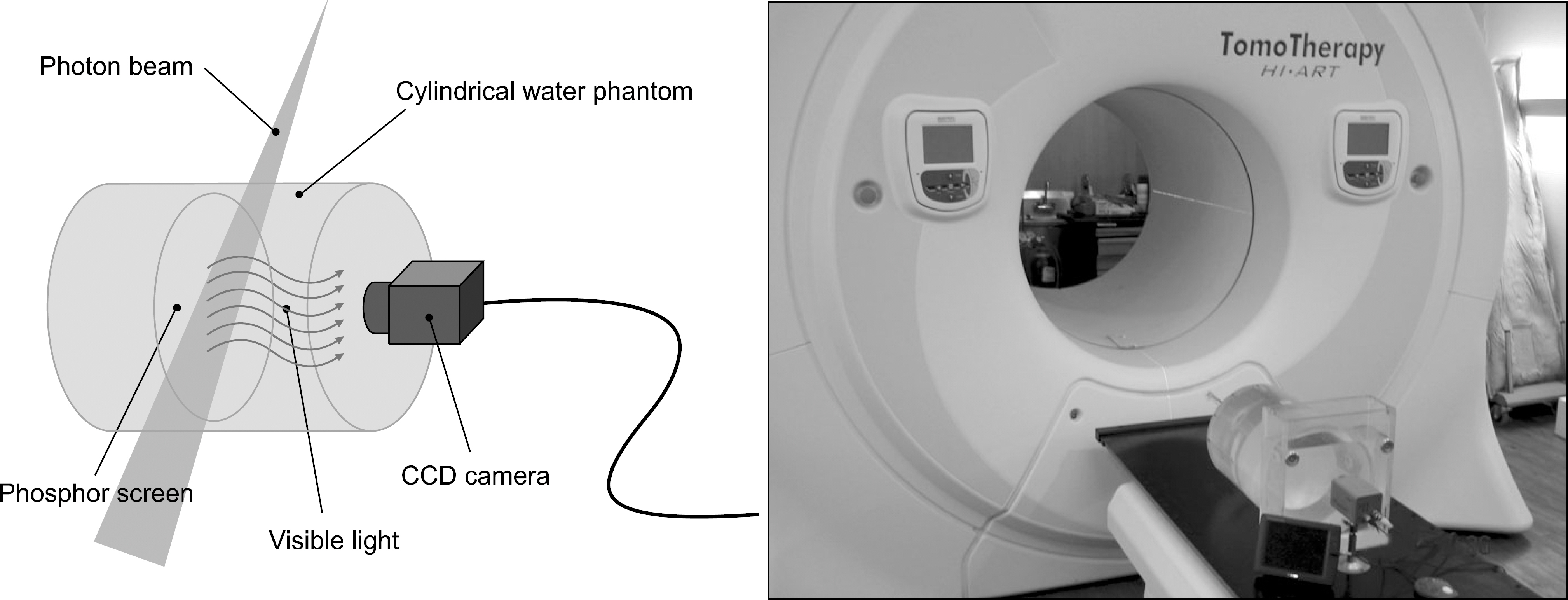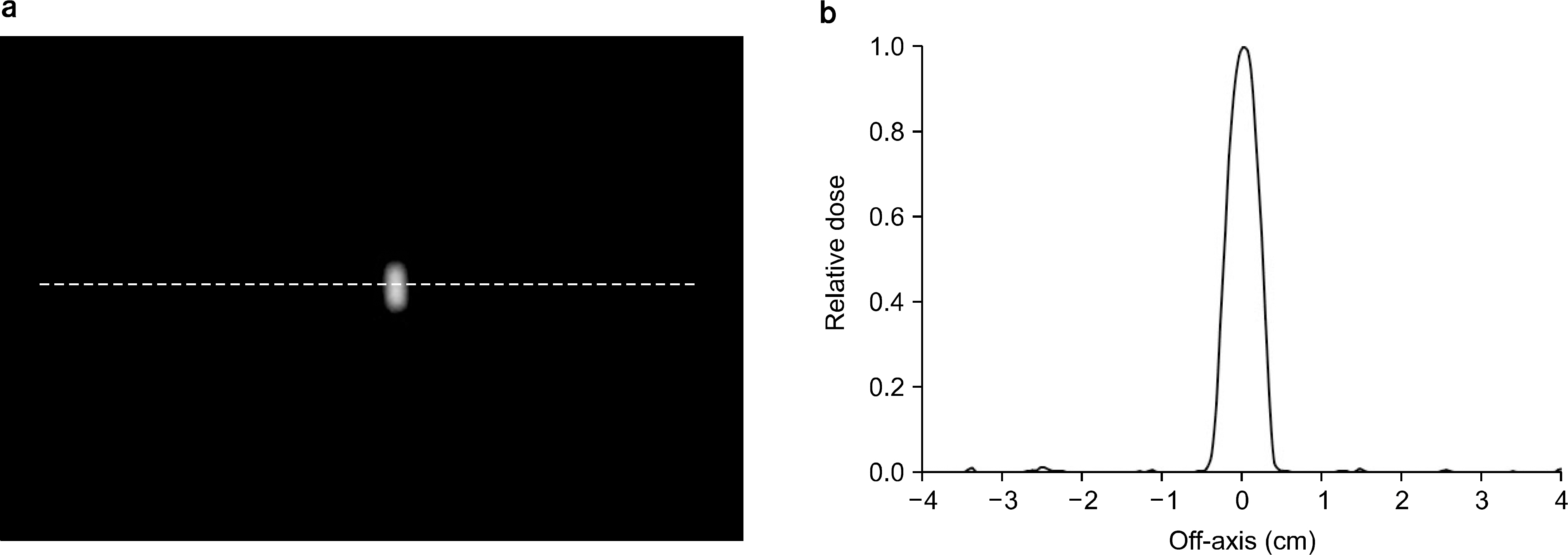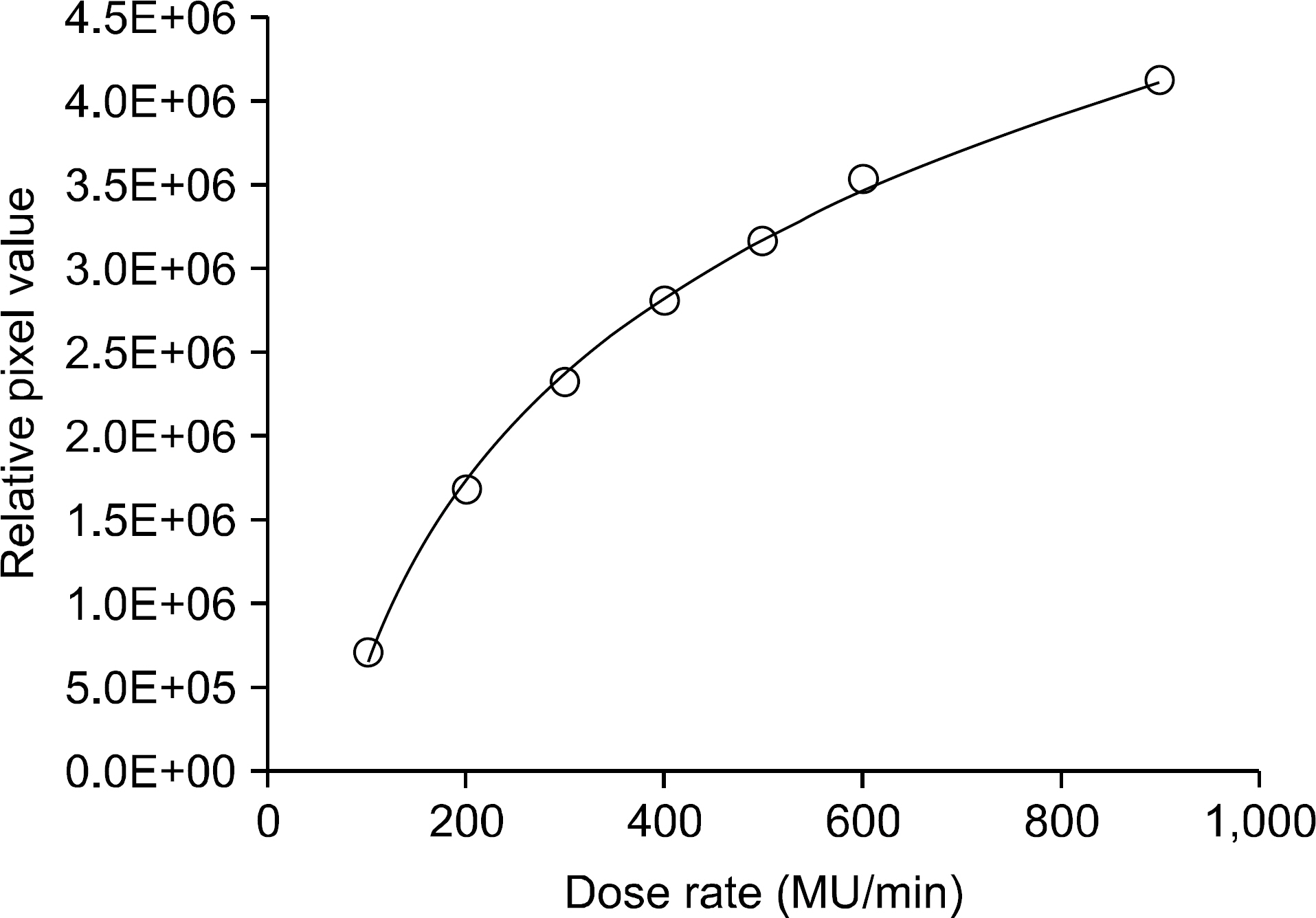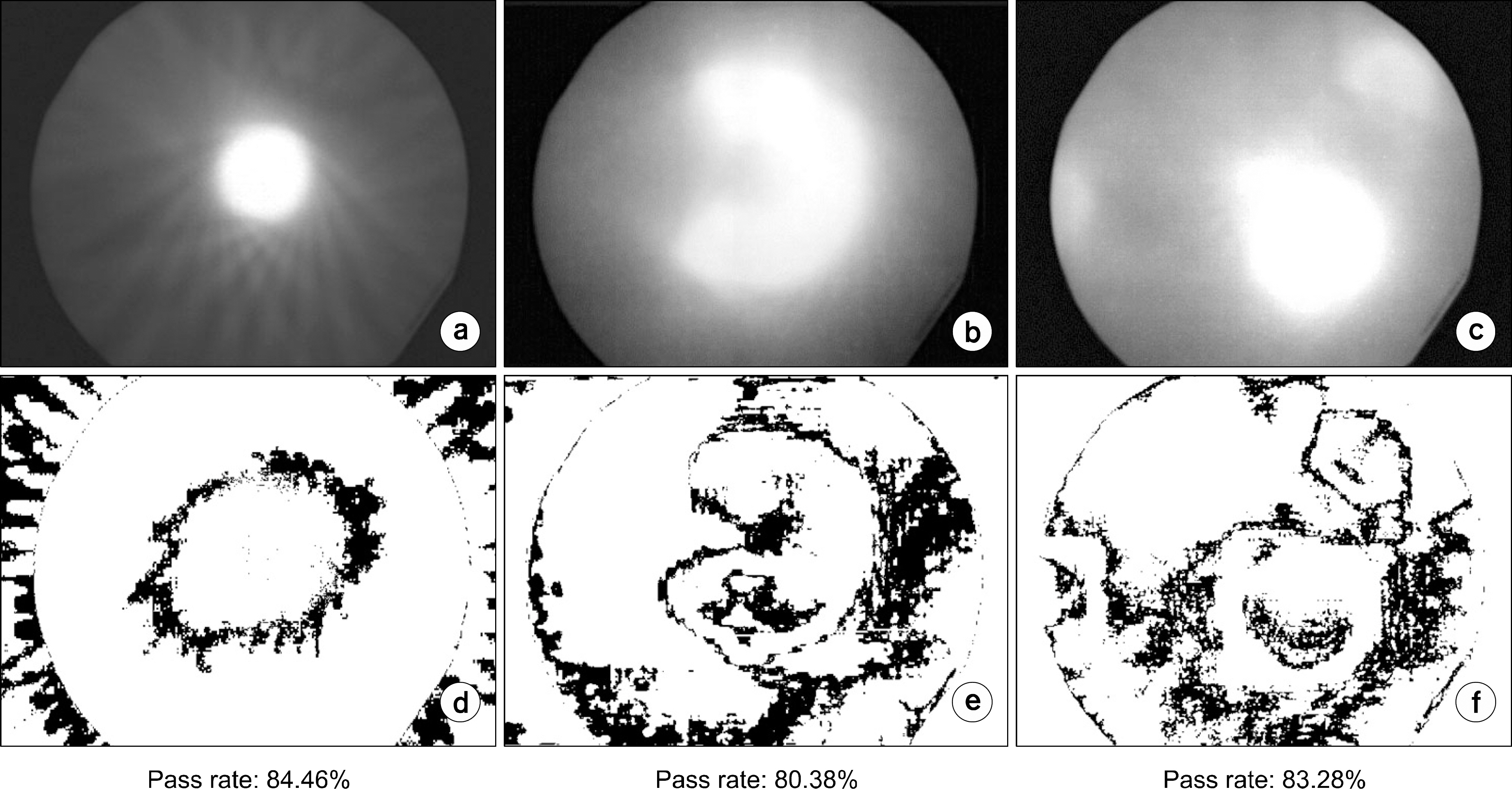Prog Med Phys.
2014 Dec;25(4):193-198. 10.14316/pmp.2014.25.4.193.
Qualitative Evaluation of 2D Dosimetry System for Helical Tomotherapy
- Affiliations
-
- 1Department of Radiation Oncology, Kosin University College of Medicine, Busan, Korea. medicalphysics@hotmail.com
- 2Department of Radiation Oncology, Guro Hospital, College of Medicine, Korea University, Seoul, Korea.
- KMID: 2315756
- DOI: http://doi.org/10.14316/pmp.2014.25.4.193
Abstract
- The purpose of this study is to see the feasibility of the newly developed 2D dosimetry system using phosphor screen for helical tomotherapy. The cylindrical water phantom was fabricated with phosphor screen to emit the visible light during irradiation. There are three types of virtual target, one is one spot target, another is C-shaped target, and the other is multiple targets. Each target was planned to be treated at 10 Gy by treatment planning system (TPS) of tomotherapy. The cylindrical phantom was placed on the tomotherapy table and irradiated as calculations of the TPS. Every frame which acquired by CCD camera was integrated and the doses were calculated in pixel by pixel. The dose distributions from the fluorescent images were compared with the calculated dose distribution from the TPS. The discrepancies were evaluated as gamma index for each treatment. The curve for dose rate versus pixel value was not saturated until 900 MU/min. The 2D dosimetry using the phosphor screen and the CCD camera is respected to be useful to verify the dose distribution of the tomotherapy if the linearity correction of the phosphor screen improved.
Figure
Reference
-
References
1. Welsh JS, Patel RR, Ritter MA, et al. Helical tomotherapy: an innovative technology and approach to radiation therapy. Technol Cancer Res Treat. 1(4):311–316. 2002.
Article2. Langen KM, Papanikolaou N, Balog J, et al. QA for helical tomotherapy: Report of the AAPM Task Group 148. Med Phys. 37(9):4817–4853. 2010.3. Langen KM, Meeks SL, Poole DO, et al. Evaluation of a diode array for QA measurements on a helical tomotherapy unit. Med Phys. 32(11):3424–3430. 2005.
Article4. Geurts M, Gonzalez J, Serrano-Ojeda P. Longitudinal study using a diode phantom for helical tomotherapy IMRT QA. Med Phys. 36(11):4977–4983. 2009.
Article5. Feygelman V, Opp D, Javedan K, et al. Evaluation of a 3D diode array dosimeter for helical tomotherapy delivery QA. Med Dosim. 35(4):324–329. 2010.
Article6. Pavoni JF, Pike TL, Snow J, DeWerd L, Baffa O. Tomotherapy dose distribution verification using MAGIC-f polymer gel dosimetry. Med Phys. 39(5):2877–2883. 2012.7. Lim S, Yeo IJ, Kim DY, Ahn YC, Huh SJ. Application of an imaging plate to relative dosimetry of clinical x-ray beams. Kor J Med Phys. 11(2):117–122. 2000.8. Lim S, Yi BY, Ko YE, et al. Feasibility study of the real-time IMRT dosimetry using a scintillation screen. J Korean Soc Ther Radiol Oncol. 22(1):64–68. 2004.9. Li JS, Boyer AL, Ma CM. Verification of IMRT dose distributions using a water beam imaging system. Med Phys. 28(12):2466–2474. 2001.
Article
- Full Text Links
- Actions
-
Cited
- CITED
-
- Close
- Share
- Similar articles
-
- Helical Tomotherapy: Image-guided Intensity Modulated Radiation Therapy
- Comparison of survival rates between patients treated with conventional radiotherapy and helical tomotherapy for head and neck cancer
- Superficial Dosimetry for Helical Tomotherapy
- Evaluation of 3DVH Software for the Patient Dose Analysis in TomoTherapy
- Dosimetric evaluation of Tomotherapy and four-box field conformal radiotherapy in locally advanced rectal cancer







